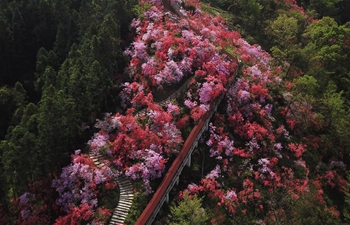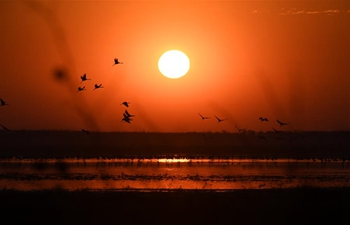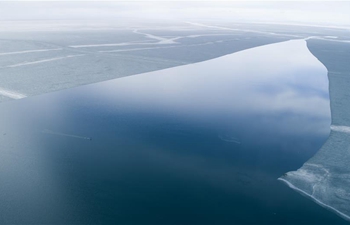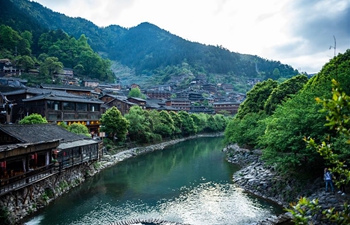NANJING, April 14 (Xinhua) -- Nanjing, the only Chinese city where visitors can observe the wild Yangtze River finless porpoise in an urban area, is considering several design adjustments in building a new trans-Yangtze traffic passage, to minimize the impact on the endangered animal.
One of the plans is to build a twin-tower suspension bridge with the main span of 2,079 meters, which would set a world record.
The design of the trans-Yangtze traffic passage starts at the border of the core zone of the Nanjing finless porpoise nature reserve. It is expected to have a total length of 38 km.
According to the Nanjing Public Works Construction Center in the capital of east China's Jiangsu Province, at the earlier stage, engineers opted for a triple-tower suspension design with one bridge tower standing in the nature reserve.
Later, they forwent the plan of the middle tower to stay clear of the natural protection area.
"The larger the span, the higher the requirements for design, construction, the quality of materials and the technique of ensuring wind stability, which is sure to increase the costs. But it is worthwhile for protecting these finless porpoises," said Wang Chao, the center's chief planning official.
"In the next stage, we will compare the bridge design and the underwater tunnel design to see which is the best option to minimize the effect on the wild mammal," he said.
The Yangtze River finless porpoise is the only freshwater subspecies of the finless porpoise family. The species, only found in the middle and lower main streams of the Yangtze River, has been living there for 25 million years. More than 50 finless porpoises have been spotted in the Yangtze River section in Nanjing.
The population has greatly reduced due to environmental deterioration. In addition to establishing the nature reserve, Nanjing has adopted various methods to protect the ecological environment including issuing a thorough fishing ban in the river section since 2014.

















